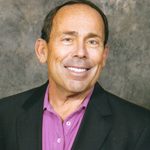Now the question arises, what is the right way or medium to distribute your surveys in order to get quality feedback responses. You design your survey and customize it with the help of a good Survey App, but are wondering the best way to distribute your survey?
Top 6 ways to Distribute your Surveys to get Quality Feedback Responses
By: Archit Jain
Photo by Emily Morter on Unsplash
When we talk about obtaining Customer Feedback, the first thing which comes to our mind is surveys. To get real customer insights, it is a prerequisite to survey your customers.
“Survey is a process of collecting data by asking certain questions to the group of individuals. A Customer Survey involves obtaining Customer Feedback by asking certain questions from your customers about your products, services and the overall Customer Experience with your organization.”
Gone are the days when the surveys were taken by approaching the customers physically with a pen and a paper questionnaire and then filling the survey forms. Nowadays, a popular method of obtaining Customer Feedback is to take surveys using different digital channels through a Survey App.
Now the question arises, what is the right way or medium to distribute your surveys in order to get quality feedback responses. You design your survey and customize it with the help of a good Survey App, but are wondering the best way to distribute your survey?
Well, it would not be wrong to say that the success of a survey majorly depends on the response rate of the survey. And to get a good response rate, it is necessary to send the survey the right way and through the right mediums.
Let’s list out some effective ways to distribute your surveys so that you can get a good response rate with high-quality feedback responses.
Top Ways to Distribute Your Surveys to Get Quality Feedback Responses
Email Surveys
SMS Surveys
Online Surveys
Survey post a help Article or a Blog
Surveys Embedded in Blogs
Social Media Surveys
Let us review how you can use these channels in an effective way to receive quality feedback response data with a great response rate.
1. Email Surveys
Email Survey is the most commonly used method to obtain survey data. Being a method involving establishment of direct contact with your customer, email is the first method which comes to most peoples’ mind when talking about taking surveys digitally.
The biggest advantage of this way of distributing your survey is that you can distribute your survey to a large number of people in a matter of few clicks. By using a good survey app, you can customize your survey and send through emails which further increases the effectiveness of the survey.
Email has a very good read and response rate. Email surveys not only enable you to send surveys to multiple people with ease, but also enables your customers to fill the survey and send response as per their convenience of time and place.
2. SMS Surveys
SMS Surveys are surveys administered to collect the survey data through Small Messaging Service(SMS). SMS surveys have proven to be an extremely effective and the most efficient way to capture Customer Feedback.
“SMS Surveys has the highest read rate, even more than the Email surveys.”
With the help of an effective Survey App, you can easily create your customized survey and send its link through SMS to multiple people in bulk with a survey tool. The SMS should contain a small effective message followed by a survey link which should open in a single click without taking much of the customers’ time so that the customers can easily open the link and take the survey.
3. Online Surveys
When you want to gather Customer Feedback, you must communicate this through your website. This conveys that you care about your customers and Customer Feedback matters for you. Online Surveys is an effective way of obtaining quality feedback responses of your Customer Feedback surveys.
Survey links should be provided on your website and should open easily within fraction of seconds on a single click so that the customers can easily fill the survey. You can also use pop-up links for this purpose.
4. Survey post a help article or a blog
Help articles and blogs are an important component of any website. When you post a help article or a blog, you can provide links of survey just below the article or the blog. You can also add some such content in your blogs and articles which helps to motivate the readers to take the survey.
Moreover, you can especially write short blogs and articles to motivate customers to fill the survey. In these short blogs and articles, you can tell the importance of providing Customer Feedback through surveys. You can explain the customers how taking surveys and providing feedback will help you to satisfy them in a better way.
5. Embedded in a Blog
You can also embed a survey link in your blog. For instance, you are running a health care center and you are writing an article on prevention of a certain disease and if someone catches that disease, how your health care center can cure it effectively.
In the same blog, you can embed your survey link in appropriate places. You can ask about certain health aspects in that survey and how aware the people are about the disease and its cure. You can take Patient Feedback also from the people who have been a patient in your center.
6. Social Media Surveys
Social media is a great medium nowadays, be it for promoting your organization or for gathering Customer Feedback data. Whenever you write a blog or a help article, make sure that you promote it on social media along with the survey links provided either below the article or embedded in the blog itself.
Moreover, whenever you are organizing a program or an event, it is important to promote it on social media and ask for the views and the opinions of the customers regarding that. Likewise, if you are organizing a major survey, you should use social media platforms to promote your survey.
In the promotion, concentrate on how in the survey, the customers can share their views, opinionsFree Reprint Articles, and feedback and how it will help you to serve them better. This will encourage the customers to share genuine feedback and their views about your brand.
Source: Free Articles from ArticlesFactory.com
ABOUT THE AUTHOR
Archit Jain
Experienced Content Writer and Strategist, been in the IT Industry from last 6 Years. Passionate about writing survey tips, customer experience, customer satisfaction, customer feedback, net promoter score, customer effort score, customer satisfaction score.














